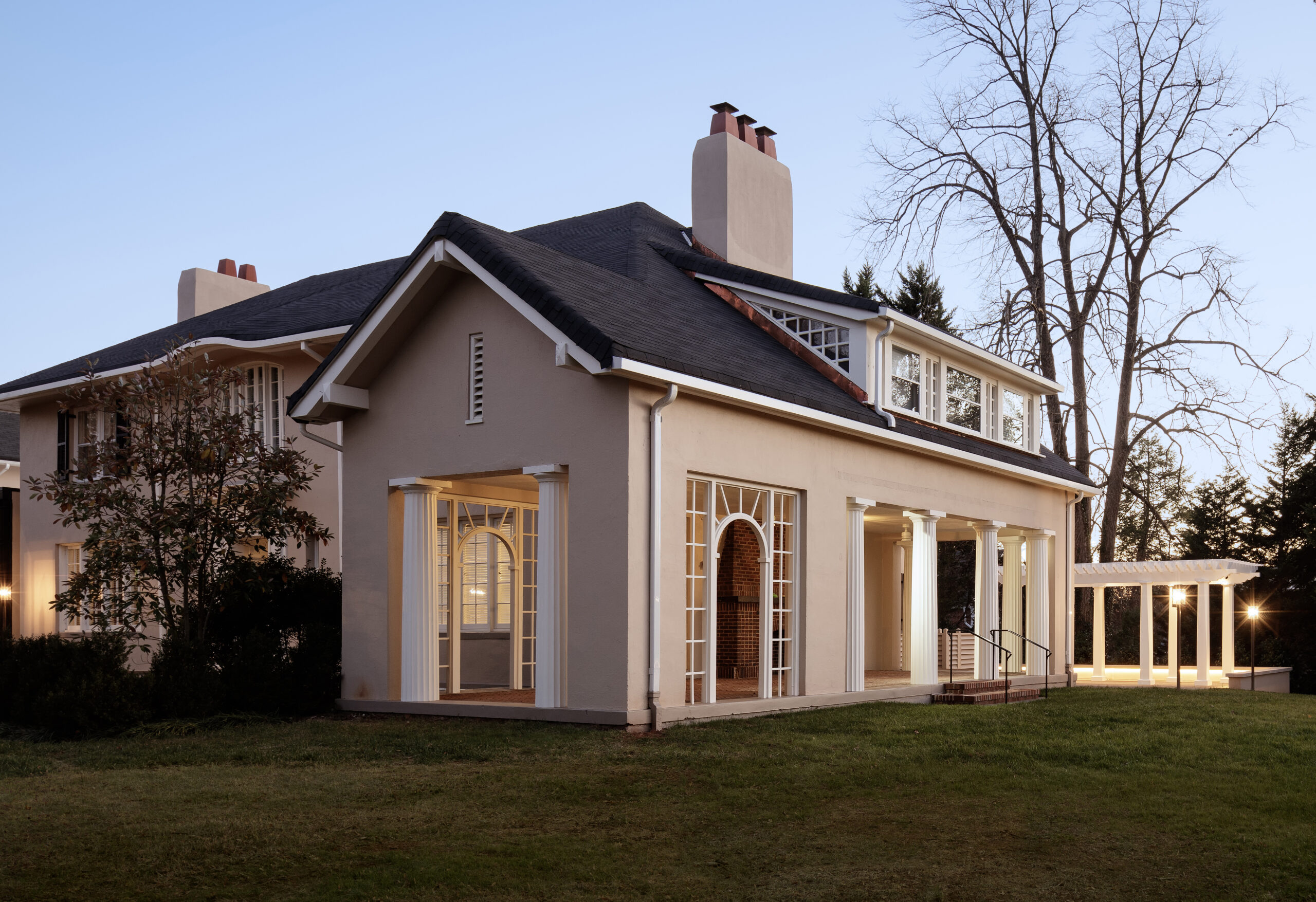
An odd feature caught the eye of the team at Glave & Holmes Architecture while rehabilitating the historic Brody Jewish Student Center in Charlottesville. This very artistic house on University Circle, historically the domain of UVA professors, was roofed with ordinary asphalt shingles, but the hips and overhangs were softly curved, lending the house a very distinctive appearance in this otherwise safely Jeffersonian Charlottesville neighborhood.
Last time, we looked at the carved helical newel post at the Brody Jewish Student Center in Charlottesville, which was restored in collaboration with Charlottesville-based contractor Martin Horn, Inc. The 1914 house, designed by accomplished local architect Eugene Bradbury, featured another unique design element: a roof type otherwise unknown to the Charlottesville area. Interior inspection showed that the framing at the valleys and ridge was curved, as were the eaves. In fact, the house was originally covered by a shallow hipped roof that made use of a roofing system popularized by American wood shingle manufacturers in the 1910s and 20s to resemble thatch.

The Brody Center’s roof had been replaced with asphalt shingles at mid-century, when the cedar shingles wore out. The roof retained some character but with a much less robust effect. While the budget didn’t permit the recreation of the wood shingle roof, G&HA made sure the radius at the hips, ridge and eaves was maintained, and that a medium grade of shingles was used which would provide a similar thickness to the cedar shingles while permitting a similar tight curve of the junctures and eaves.
The final product, with its distinctive silhouette, preserves a historic character-defining detail and is an enhancement to the neighborhood.
Reprinted with permission from G&HA. This post originally appeared in Preservation Spotlight: A Simulated Thatched Roof.
